Lantwit-Major, or Llanilltydvawr - From 'A Topographical Dictionary of Wales' (1849)
LANTWIT-MAJOR, or LLANILLTYDVAWR, a parish, in the union of Bridgend and Cowbridge, hundred of Cowbridge, county of Glamorgan, South Wales, 5 miles (S. by W.) from Cowbridge; containing 1027 inhabitants. This place, originally called by the Welsh Caer-Wrgan, derived its subsequent name of Llan-Illtyd, of which its more general appellation Lantwit is only a modification, from the dedication of its church to St. Illtyd, or Iltutus; and its distinguishing adjunct Vawr, or Major, from its pre-eminence over other places of the same name. The parish, which is of considerable extent, comprises one of the most interesting districts in South Wales, and appears to have been inhabited from a very remote period; but whether originally by the ancient Britons or the Romans cannot be satisfactorily ascertained. Modern writers are of opinion that the small village of Boverton, in the parish, was the site of the Roman station Bovium, placed in the Itineraries on the line of the Julia Via Maritima, between the stations of Isca Silurum (now Caerleon) and Nidum (Neath). This opinion derives weight, not only from the affinity between the names, and the coincidence of its situation between those two stations, but also from the course of a Roman road, which has been distinctly traced, leading to some camps of Roman construction near that village, where also other relics of Roman antiquity have been discovered.
In the fifth century, a college was established here, or rather revived, on the ruins of a more ancient institution, said to have been founded by the Roman Emperor Theodosius, which, after his name, was called by the Welsh "Bangor Tewdws," and in which the heresiarch Pelagius is said to have been educated. This more ancient institution was destroyed by a band of Irish pirates, who, landing on this part of the coast, are said to have carried away by violence its principal, Maenwyn, better known as St. Patrick, the apostle and tutelar saint of Ireland. Soon afterwards, St. Germanus, who was sent into Britain by the Gallican bishops, to suppress the Pelagian heresy, is supposed to have been hospitably entertained at Boverton, where the native reguli continued to reside occasionally till the overthrow of their power by Robert Fitz-Hamon; and, associating the old college of Theodosius with the name of Pelagius, Germanus selected the site of that institution at Lantwit, then called Caer-Wrgan, for the foundation of one of those seminaries for the education of the British clergy, which he deemed it expedient to erect, as a powerful means of eradicating this heresy. In the establishment of the institution he was greatly assisted by the king of the country; and, on its completion, he placed it under the superintendence of Illtyd, or Iltutus, who had accompanied him into Britain, and under whose management it flourished exceedingly, and was amply endowed by Meuric, Arthur, and Morgan, successive reguli of this part of Wales. Scholars flocked to the seminary from all parts of Christendom, among whom were the sons of British nobles and of foreign princes, besides numerous others, amounting at one time to more than 2000 pupils. For the accommodation of this large number there were not less than 400 lodging apartments and seven halls, or colleges. The course of instruction adopted by Iltutus embraced not only such sacred and profane literature as was requisite for clerical education, but also husbandry and other useful arts; and the common plough now in use in some parts of Wales is still called St. Illtyd's plough, in honour of Iltutus, who was regarded as the inventor of it. For many generations this seminary continued to be the university of Britain, and to be frequented by illustrious persons of all countries, till its revenue was transferred to the abbey of Tewkesbury, soon after the Norman Conquest, when the universities of England acquired the ascendancy, and that of Iltutus sank into comparative obscurity. That holy and learned man is said to have presided over the institution for the protracted term of ninety years; and among the eminent persons who were his pupils may be enumerated Gildas, the historian; David, who removed the episcopal see from Caerleon to St. David's, and who ultimately became the patron saint of Wales; Paulinus, Bishop of Leon in Spain; Samson, successor to David in the see, and afterwards Bishop of D�l in Brittany; Talhaiarn, a celebrated bard and a distinguished saint; and Taliesin, an eminent bard. According to Sir Henry Spelman, a large assembly was convened in the church of the establishment here, in 560, to negotiate a treaty of peace between Morgan, regulus of this part of the country, and his uncle Trioc, whom the former most treacherously slew, afterwards making his peace with the Church by paying to this establishment the annual tribute of a pot of honey and an iron kettle. The school lingered for a long period in comparative insignificance, and was not finally closed till the reign of Henry VIII., when the remaining portion of its tithes, and an annual payment called the abbot's rent, being all that was left to it of its ancient endowments, were seized by that monarch, and, together with the revenue of the dissolved monastery of Tewkesbury, conferred on the Dean and Chapter of St. Peter's, in the city of Gloucester, which that sovereign had recently erected into a bishopric.
The parish is situated on the coast of the Bristol Channel, in the Vale of Glamorgan, and comprises a large tract of arable and pasture land, inclosed, and in a high state of cultivation. The soil, of which the substratum is a blue limestone, is, for richness and fertility, almost unequalled in any part of South Wales; and the surrounding scenery, though not in general distinguished by any striking peculiarity of character, is occasionally diversified by features of picturesque beauty and romantic grandeur. A long range of hills, running in a direction from east to west, separates the mountainous parts of the county from the level districts of the spacious and fertile Vale of Glamorgan, which is enlivened with numerous villages and churches, and enriched with thriving plantations embowering some of the seats and villas of the gentry.
The village, which is situated in the south of this pleasing Vale, displays obvious indications of its original extent and importance, and has in every respect the appearance of a considerable, dilapidated town. It occupies a large extent of ground, but presents several chasms in its streets, some of which are nearly choked up with the ruins of decayed houses, and others are scarcely distinguishable, except by their situation within the limits of the town, from the different roads that appear to converge towards this place, as a common point. The town-hall is still remaining, and in a state of good repair. It resembles in its appearance those ancient buildings which in some places are called court-houses, and church-houses, though of much larger dimensions: the ascent to it is by a double flight of steps at one end. Over it is a bell on which the clock strikes, said to have been presented to St. Iltutus by the pope, and by Holinshed to have been taken, among other spoils, by an army which King Edgar, towards the latter end of his reign, brought into Glamorganshire, to chastise the Welsh, who had rebelled against him: on removing this bell, in the year 1815, it was found to bear the inscription "Ora pro nobis, Sancte Iltute." The bell itself, however, and the style of its inscription, says a recent writer, prove that it is not the bell of the saint, but that it was cast at a later period, when his name had become reverenced. The ancient gaol has been demolished only within the last seventy years; and the name of "Gallows way" is still retained in the road where executions usually took place, and where human skeletons have been found at various times. But whatever municipal privileges Lantwit may appear, from these circumstances, to have formerly possessed, have long been lost, even, according to some authorities, since the time of Henry VII. That it formerly carried on a considerable trade with the coasts of Somersetshire appears evident; and the dialect of that county is said to have been prevalent here within the memory of men living at the commencement of the present century. A fair is held annually on June 22nd. In the vicinity is the ancient port of Colhow, near Colhugh, where, during the reign of Henry VIII., vessels frequently sheltered; though now, by the changes which have taken place on this part of the coast, it is avoided by mariners as dangerous. The remains of the ancient harbour may still be traced, and, notwithstanding the great encroachment made by the sea, the foundation of the pier, and the piles of wood by which it was defended on the western side, are still visible at low water.
Though the village of Boverton is far inferior in extent and population to Lantwit-Major, yet, as the seat of the ancient reguli of this portion of the principality, and also as the principal place prior to the establishment of the schools of Iltutus, it has in all ancient documents held the precedence, and given title to the manor, which is to this day in the court rolls styled the "Lordship of Boviarton and Lantwit." After the conquest of this part of Wales by the Normans, the manor was held by Robert FitzHamon, from whom it passed to the succeeding lords paramount of Glamorgan, as part of his great lordship. It became vested in the crown in the reign of Henry VII., who granted it to his uncle, Jasper, Duke of Bedford, by whom it was given to Grufydd Voss, whose daughter and heiress conveyed it by marriage to Roger Seys, Esq., from which family it passed by marriage to Robert Jones, Esq., of Fonmon Castle, who sold it to the late Elias Vanderhorst, of Bristol. From him it passed into the possession of John Tunno, Esq., and in 1838 was purchased by Sir J. J. Guest, Bart., its present proprietor.
The living is a discharged vicarage, rated in the king's books at �14. 13. 9., and having the rectory of Llysworney annexed; present net income, �410; patrons, the Dean and Chapter of Gloucester. The tithes of the parish have been commuted for �771. 7. 11., of which a sum of �481. 7. 11. is payable to the Dean and Chapter, who have also a glebe of twelve acres, valued at �25 per annum; �220 are payable to the vicar, and �70 to an impropriator. The advowson belonged to Iestyn ab Gwrgan, and, together with the rest of his property, was seized by Robert Fitz-Hamon, and conveyed with the lordship of Glamorgan, by marriage of his only daughter, Mabel, or Mabli, to Robert Fitz-Henry, by whom it was conferred on the newly-founded abbey of Tewkesbury, upon the dissolution of which it was granted by Henry VIII. to the Dean and Chapter of Gloucester.
The present church, dedicated to St. Illtyd, is a spacious and venerable pile of building, erected, according to an old manuscript, by Richard Neville, Earl of Warwick, and lord of Glamorgan, in the reign of Henry VI., and comprising, in addition to that portion of it in which divine service is performed, a more ancient structure, separated from the former by the tower, to the west of which it is situated. From this latter a door opened into a dilapidated building, in a line with it, called the Lady Chapel, the walls of which were ornamented with busts and figures of saints, now destroyed; this chapel, which is almost a ruin, was forty feet and a half in length. The old church, which was sixty-four feet and a half long, is said to have been deserted on account of the dampness of its situation; but this would have equally operated against the erection of a contiguous structure of larger dimensions. Nearly in the centre of it are two monumental stones, brought, as it is said, in 1730, by Mr. Thomas Morgan, schoolmaster and parish-clerk, from a place called the "Great House," where it is supposed there was formerly a church: these are minutely described in the sixth volume of the Arch�ologia Londinensis, accompanied with plates. One of them bears the following inscription: NE PETRA CALCETUR QUE SUB JACET ISTA TUETUR. In a room behind the altar, probably that used for the vestry, is a gigantic figure of a man in the costume of the time of Henry VIII., elaborately sculptured in freestone (of the kind found near the river side at Bridgend, in this county), with an English inscription, simply stating it to be the statue of "Prince Richard Hopkins:" this is described in the same publication. Near the statue is the bust of a child, sculptured in alto-relievo; and in a niche near the altar is the figure of a person kneeling, rudely sculptured, and habited in a costume similar to that of Hopkins. The more modern church, which is ninety-eight feet in length and fifty-three in breadth, consists of a nave, with a north and south aisle, and a chancel, and has a very handsome altarpiece.
In the churchyard, near the south entrance, is a stone placed flat in the ground, which appears to have been part of an ancient cross, carved with knots and other devices; it is about six feet in length, and is said to have been placed there by Morgan, who removed it also from the "Great House." On the north side of the church, likewise in the churchyard, is a curious stone called St. Illtyd's Cross, noticed by Gough in his Additions to Camden, which was erected in the sixth century, in honour of that saint, by Archbishop Samson. Upon the western side of it is inscribed, in the several compartments, "Crux Iltuti," "Samson redis," and "Samuel egisar" (for excisor), Samuel being the name of the sculptor; and on the eastern side is "Samson posuit hanc crucem pro anmia (instead of anima) ejus." The stone is elaborately carved, and was once the pedestal of a cross; its height above the ground is six feet three inches, and its breadth is two feet six inches at the bottom, and one foot ten inches at the top. A very curious monumental stone of about the ninth century, forming originally the shaft of a cross, which anciently stood near the porch of the church, and which, on the interment of a corpse of extraordinary size, having been undermined in digging the grave, fell down upon the coffin, and was covered with earth in filling up the grave, was, in 1789, discovered by Mr. Edward Williams, who was led to search for it by a traditional story relating to it, at that time current in the neighbourhood. This stone, which is nine feet in height, two feet four inches broad at the base, and one foot seven inches at the upper end, and about one foot three inches in thickness, bears the following inscription: "In nomine D� Summi incipit crux Salvatoris, qu� preparavit Samsoni Apati pro anima sua et pro anima Juthahelo rex et Artmali Tegat crux me." It appears, from the old register of Llandaf, that Juthahel, King of Glamorgan, and Artmael, King of Gwent, bestowed lands and conferred great privileges on the churches of St. Illtyd. This ancient stone must have been buried before the continuator of Camden copied the inscriptions on St. Illtyd's monument, as he makes no mention of it, which he doubtless would have done had it been then visible. After it had been raised out of the grave in 1789, it lay on the ground till 1793, when Mr. Williams obtained assistance and placed it in an erect position against the east side of the church porch. Close to the wall of the lower or old church is another stone worthy of notice, of a pyramidal form, about seven feet high, and curiously carved, having a deep groove on the inside, next the wall; it has been supposed to have formed part of a heathen altar, but how or for what purpose it was placed there has not been satisfactorily explained.
There are places of worship in the parish for Wesleyans, Baptists, Independents, and Calvinistic Methodists. A Church school, established in 1831, is supported chiefly by voluntary contributions; and five Sunday schools are held, one of them in connexion with the Church, and the others with the dissenters. The only charity is a bequest of a rentcharge of �3. 10., by Robert Powell, in 1726, for a distribution of bread weekly among poor widows not receiving parochial aid: this amount is disposed of according to the will of the donor. Two other charities have been discontinued for a number of years; one, a bequest of �200 by Margaret Seys, in 1700, for teaching ten children and apprenticing one; and the other, a bequest by Iltid Nicholas of �20, for the use of the poor.
About a mile and a half from the village of Boverton, on the lofty cliffs overhanging the Bristol Channel, are the remains of two Roman camps. That on the eastern cliff, which defends one side of the valley of Colhugh, is called the "Castle Ditches;" it is a very strong post, accessible on one side only: the other, which is also upon the sea-coast, is about two miles distant from Castle Ditches. In many of the gardens and small inclosures at Boverton, and in its vicinity, human skeletons have been discovered, and Roman coins dug up. Of the latter, several were found in November 1798, which were sold to the Rev. Robert Nicholl and others; those in the possession of that gentleman are coins of Nero, Vespasian, Domitian, Nerva, Trajan, Adrian, Antoninus Pius, and other Roman emperors. They were found by some labourers employed in filling up an old quarry not far from Eglwys-Brewis, near Boverton, and are of silver. There are several remains of the ancient collegiate buildings in different parts of the parish: the house in connexion with the rectorial tithes, which were severed from the monastery of Iltutus soon after the Norman Conquest, is still a respectable edifice, with hanging gardens descending towards the church, and having several spacious rooms. |


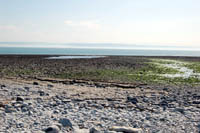
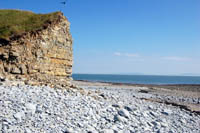
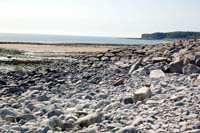
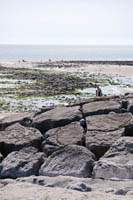
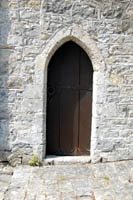
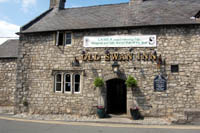
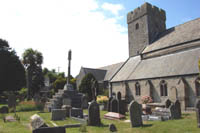
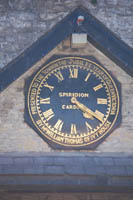
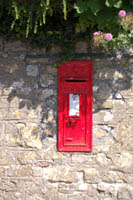
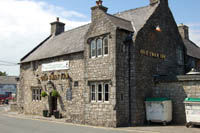






I am the website designer for Llantwit Major and I was wondering if you could include a link to www.llantwitmajorvale.co.uk on http://www.welshicons.org.uk/html/llantwit_major.php
Thanks
Paul